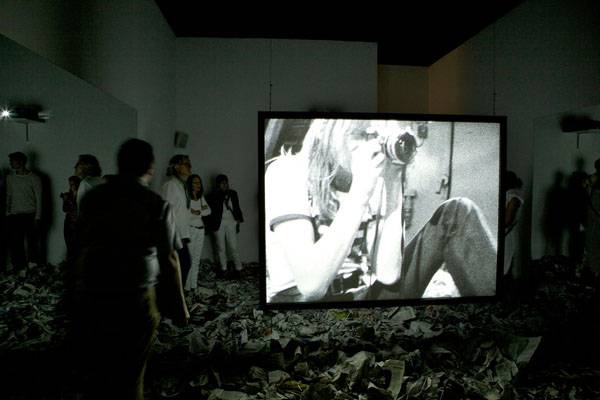British-born artist Anthony McCall is known for performance-based
sculptures and films. His Circulation Figures was featured at Art
Basel’s Art Unlimited section in June of 2012. Here, we had a
conversation about the proliferation of self-recording devices and
their effect on time.
Yanyan: Your piece, where you directed photographers to photograph
themselves, was considered surrealist at the time. Did you ever
imagine it would become the standard in the next few decades, with
almost everyone in the world documenting their lives and themselves?
Anthony: It is true that the original “Circulation Figures” event in
1972 seemed like a kind of hallucination, whereas now the ubiquity of
portable recording devices and the way we circulate our most private
images across the world has become almost the norm. And parallel to
this has been the massive expansion of surveillance technologies and
the increasing monitoring of public life by the State and by
corporations. These feel like seismic shifts.
Y: Were you influenced by films of that time where photography was the
subject, like Blow Up or Warhol’s films?
A: I was at art school in London between 1964 and 1968, just about
when these works were emerging. I was aware of Warhol’s films but it
was “Empire” in particular that I found suggestive — because of its
bringing together of real time and screen time. And I was far more
interested in John Cage and the artists associated with the Happenings
Movement in New York — like Robert Whitman and Alan Kaprow — than in
works that were somehow ‘about’ photography.
Y: The mirrors create an endless continuum of the photographers on
film and the viewer. How should the viewer place himself in this
context?
A: There is a movie projected onto a screen at the center of the
installation. Two large mirrors facing one another on opposite sides
of the space reflect the movie and multiply its images into infinity.
The movie shows footage shot 40-years ago by the participants of the
original event who simply filmed themselves filming one another within
a space similarly defined by large mirrors and endless replication. In
today’s installation the mirrors also incorporate and replicate the
new visitors, combining them with the historical footage. The circle
is closed — or perhaps opened — by the fact that many visitors pull
out their phones and cameras to record themselves and their
companions filming within the piece; and some email those images; and
so it continues.
Y: The newspapers underfoot seem to embody time, or the passing of
time. Is that a current through this piece?
A: It is exactly forty years since the original event occured. The
distance between then and now has undoubtedly become a new element of
the work. The passing of time is also noticeable in the ‘historical’
silver tones of the black-and-white footage, and the color balance of
the old 16mm Ektachrome footage — so different from today’s digital
color. Personally speaking, I see myself and old friends across a four
decade divide. The newspapers — seen strewn across the floor in the
original movie footage as well as on the floor of the installation in
the present do, if anything, feel like a continuity, where visually at
least, little seems to have changed.
Images courtesy of the artist, Sean Kelly Gallery, Sprüth Magers and Galerie Thomas Zander





















